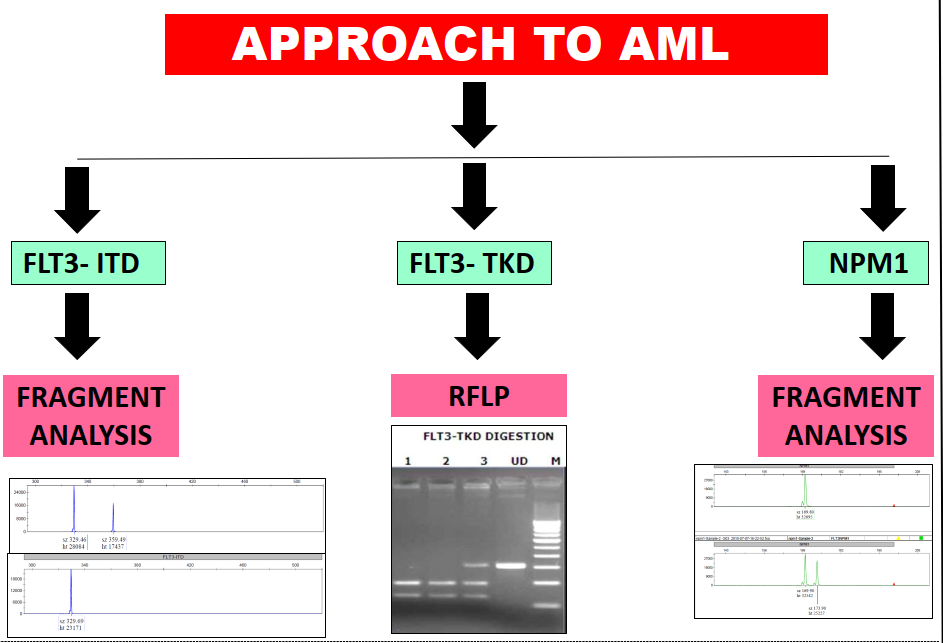Acute myeloid leukaemia (AML) is an extremely heterogeneous disease. The WHO classifies AML into numerous categories depending on the cytogenetic abnormalities. This helps in stratification of patients for treatment. In normal karyotype AMLs, FLT3 internal tandem duplications (ITDs) and NPM1 mutations are frequently observed and identifies patients with poor and good prognosis, respectively. An AML that carries both FLT3-ITD and NPM1 mutations has intermediate risk. FLT3– tyrosine kinase domain (TKD) mutations may also be seen in AML. The impact of these mutations is however, controversial.
FLT3-ITD is caused by in-frame insertions and duplications in the FLT3 gene. NPM1 mutations are caused by 4bp insertions that disrupt the nucleolar localization signal. Both these types of mutations can easily be screened by fragment analysis. The point mutations in codons 835/836 of FLT3-TKD are screened by PCR and restriction fragment length polymorphism (RFLP).

References
- Qin Huang et al, British Journal of Haematology 2008, 142,482-492.
- Kottaridis et al., Blood 2002, 100, (7); 2393-2398
- Spiekermann et al., Blood 2002, 100; 3423-3425
- Schneider F et al Blood 2009: 113(21): 5250-5253
